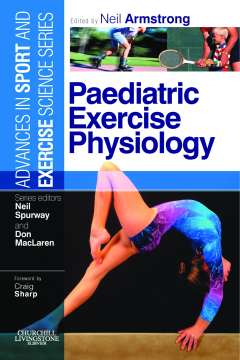
Additional Information
Book Details
Abstract
Children are not mini-adults. They are growing and maturing at their own individual rates and their physiological responses to exercise are dependent on a large number of variables as they progress through childhood and adolescence into adult life. Understanding has been limited by the fact that measurement techniques and equipment developed for use with adults are often not appropriate or even ethical for use with young people. These issues are addressed in this book which provides an analysis of physiological responses to exercise in relation to age, growth, maturation and sex.
- Structured in an easy, accessible way for students and lecturers
- Well referenced, including a further reading list with each chapter
- Numerous standard textbook elements, including learning objectives, key points and an extensive glossary of terms and commonly used abbreviations
- The editor and contributors are all active researchers in paediatric exercise physiology with experience of teaching modules in this area
Table of Contents
| Section Title | Page | Action | Price |
|---|---|---|---|
| Front Cover | Cover | ||
| Paediatric Exercise Physiology | iii | ||
| Copyright Page | iv | ||
| Contents | v | ||
| Contributors | vii | ||
| Foreword | ix | ||
| Preface | xi | ||
| Chapter 1. Growth and maturation | 1 | ||
| Chapter 2. Interpreting performance in relation to body size | 27 | ||
| Chapter 3. Muscle strength | 47 | ||
| Chapter 4. Exercise metabolism | 71 | ||
| Chapter 5. Maximal intensity exercise | 99 | ||
| Chapter 6. Pulmonary function | 119 | ||
| Chapter 7. Cardiovascular function | 139 | ||
| Chapter 8. Aerobic fitness | 161 | ||
| Chapter 9. Oxygen uptake kinetics | 189 | ||
| Chapter 10. Responses to training | 213 | ||
| Chapter 11. Exercise and environmental conditions | 235 | ||
| Chapter 12. Perceived exertion | 275 | ||
| Chapter 13. The young athlete | 299 | ||
| Chapter 14. Physical activity and health | 325 | ||
| Glossary | 347 | ||
| Index | 359 |
